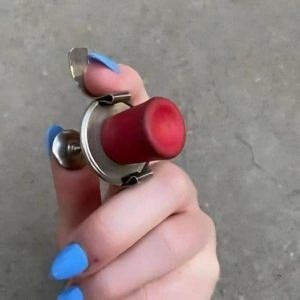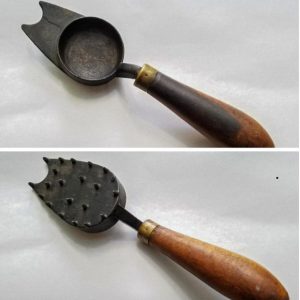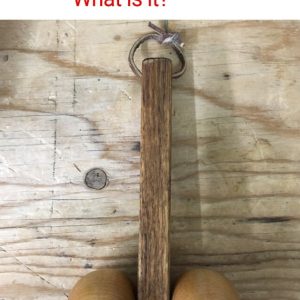Brass half shoes with a bar at the instep for stirrup straps on saddles have a rich history that spans centuries. These stirrups, often elaborately designed with decorative floral patterns, were more than just functional riding gear; they were a testament to the craftsmanship and ingenuity of their creators. Originating from South America during the time of Spanish colonization in the 16th century, these brass stirrups played an essential role in horseback warfare and travel. Over time, they evolved from a practical tool into collectible antiques admired for their beauty and historical significance.
The Origins of Brass Half Shoes with Bars at the Instep

The brass stirrup, known for its half-shoe design with a bar at the instep, traces its origins to the 16th century. After the Spanish conquest of South America, horses became a dominant means of transport and warfare for the Spanish Conquistadors. With the rise of mounted warriors, there was a need for more advanced stirrup designs that could offer both protection and support to riders during combat.
The primary function of these brass stirrups was to protect the rider’s feet in battle. Enclosed at the toe, these stirrups shielded the rider’s feet from weapons and rough terrain. Additionally, they provided a sturdy platform that allowed riders to stand up in the saddle while wielding a sword, charging with a lance, or aiming a bow. The bar at the instep helped secure the rider’s feet, preventing them from slipping during intense moments of combat.
The Practicality of Brass and Bronze in Stirrup Design
Why were brass and bronze the metals of choice for these stirrups? The answer lies in the metals’ durability and resistance to rust. Iron, a common material for many other tools and implements, was prone to rust, especially in South America’s varied climates. Brass and bronze, on the other hand, offered superior resistance to corrosion. This made them ideal for creating stirrups that would withstand the test of time, even when exposed to rain, mud, and humid environments.
Additionally, brass and bronze were easier to work with compared to iron. The metals could be shaped and decorated with intricate designs, allowing for more artistic expressions. The decorative floral patterns often found on these stirrups were not just for show; they reflected the craftsmanship and attention to detail of the artisans who forged them by hand.
The Role of Brass Stirrups in Horseback Warfare
The Spanish Conquistadors brought these brass stirrups to the New World as part of their horse equipment. They were not just tools for riding but were also integral to their military strategies. Mounted horsemen needed stirrups that offered stability and protection, especially during battles where they faced enemies on foot and horseback.
These stirrups allowed riders to stand up in the saddle, giving them greater mobility and power when using weapons. Whether charging with a lance, slashing with a sword, or shooting arrows, the brass stirrups provided a firm base for the rider. This gave the Conquistadors a significant advantage in warfare, as they could maintain balance and control even in the heat of battle.
The Enduring Appeal of Floral Patterns in Stirrup Design

One of the most distinctive features of these brass half shoes is the intricate floral patterns that often adorn them. These designs served both a decorative and functional purpose. The floral patterns were etched or forged onto the stirrups, adding an element of beauty to what was otherwise a utilitarian object.
But these patterns were more than just decoration. They also represented the cultural fusion that occurred during the Spanish colonization of South America. The floral designs often incorporated elements of indigenous art, blending European and Native American influences into a unique artistic style. This blend of cultures is part of what makes these stirrups so captivating to collectors today.
Collectibility and Antique Value of Brass Stirrups

In modern times, brass half shoes with bars at the instep have become highly sought-after collectibles. Equestrian enthusiasts appreciate them for their historical significance and practical design, while antique collectors admire them for their craftsmanship and decorative appeal. Authentic pieces, especially those from the 16th century or the early 1900s, are considered valuable antiques.
Collectors often look for signs of authenticity, such as hand-forged details, floral etchings, and wear patterns that indicate the age of the stirrups. Brass stirrups that have aged gracefully, with some of the brassiness worn off, are particularly desirable. They offer a glimpse into the past, showcasing the wear and tear of a tool that was once used daily by riders navigating rough terrain or engaging in battle.
The Legacy of Brass Half Shoes in Modern Equestrian Culture

Although brass stirrups are no longer commonly used in modern horseback riding, their legacy endures. They symbolize a time when horse riding was not just a leisurely activity but a vital part of warfare and transportation. The design principles behind these stirrups—protection, stability, and durability—continue to influence modern equestrian gear.
Today, many equestrians and collectors appreciate these brass stirrups not just as antiques but as symbols of the rich history of horseback riding. They represent the ingenuity of early artisans who combined functionality with artistry, creating tools that were as beautiful as they were practical.
A Testament to Craftsmanship and History
Brass half shoes with bars at the instep for stirrup straps on saddles are more than just a piece of riding equipment; they are a testament to the craftsmanship and ingenuity of early artisans. Originating in the 16th century during Spanish colonization, these stirrups played a crucial role in horseback warfare, providing protection and stability to riders.
Today, these stirrups are highly collectible, admired for their decorative floral patterns and historical significance. Whether you’re an equestrian enthusiast or an antique aficionado, these brass stirrups offer a unique glimpse into the past, showcasing the enduring legacy of a tool that has stood the test of time.


